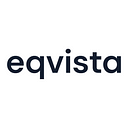How can you establish an ESOP plan for your startup growth?
Gone are the days when you can choose the kind of remuneration for employees who receive them without question. Today, talented employees globally know what their worth is and demand deserving pay structures and analyze their incentive schemes. If you are setting up your startup company and are looking for skilled employees who can add value to your company, consider rewarding them with what they are worth. ESOP pools have now become a pre-requisite for not just investors but also employees to value your company.
An Employee Stock Options Plan (ESOP) is a strategy that allows employees to own company shares. These plans play a vital role in encouraging and retaining a loyal and skilled workforce in your company.
An NCEO report reveals the prevalence of at least 6482 ESOPs in the U.S with over 13 million participants.
It is recommended to have your ESOPs in order before hiring employees or even approaching investors to exhibit the standard of your company. Founders take more time in formulating the scheme because they are often anxious about granting stocks to the staff and confused about vesting schedules. Read on to know how to set up that perfect ESOP for your startup to witness company growth.
Why is an ESOP important for your startup?
As a founder, it is a necessity to bring on board leaders and employees that can be assets to add more value to your company. ESOPs acknowledge the hard work of an employee and incentivize him to work harder in the coming years. In an era where switching companies for better pay and work culture is a norm, it can be challenging to sustain deserving talents. Giving them a sense of ownership through the stock options can urge the employees to consider the company goals as theirs and stick around for a longer time. Another NCEO claims Penmac Staffing as the second largest employee-owned company with 28,000 employees. Let’s try to understand how to set an ESOP plan from scratch.
Establish your ESOP scheme
The foremost thing to do is set your plan ready. Understand what pool size can suit your business needs and budget. 5% -10% size is considered a standard pool size. However, this can grow in size as your hiring needs and financial success expand. Y Combinator suggests at least 20% allocation for ESOPs in startups. Some startups even begin from a 25% pool size initially. Remember to keep it not too low or not too high to attract and retain staff respectively.
Then, evaluate the type of ESOP you are willing to offer. They can be either Non-qualified Stock Options (NSO) or Incentive Stock Options (ISO). The former can be assigned to everyone including advisors and consultants while the latter can be offered only to the employees.
Schedule your vesting periods wisely
Vesting periods are waiting times after which an employee can exercise their right over the shares. Standard vesting periods are between 3–4 years. If you try to extend the vesting time more, the employees may feel unimpressed and walk away too quickly. You can also consider monthly vesting options if your budget allows. Similarly, the cliff period must at least be 12 months to avoid confusion if a staff leaves the company too soon. Remember to offer stock options in units and not in value.
Tip: By all means, create a plan that is flexible for changes in the future. You may want to adjust your allocations based on the market trends or offer more options to the employees based on your success rate.
Apply for Certification
A 409a valuation is important to proceed with your stock options plan mainly for auditing and accounting activities. Make sure you abide by the concerned laws. Research well in advance on the kind of documents you need and stages of valuation. You can use the assistance of a financial advisor to ease the process.
Get the consent of the board members
After having your ESOP schemes and outlines in order, organize a formal meeting, usually the Extraordinary General Meeting (EGM). Present your plans before the director’s board and the shareholders and pass a special resolution. The presentation should cover taxation possibilities on the stocks as well. Get their feedback and consent on a voting basis. After receiving the approval you can offer the grant letter to your employees.
Consider all the possible barriers
What happens if the ownership changes? Analyze the effect of such changes on the ESOP setup. The company may have to repurchase its shares when an employer leaves. So remember to not exhaust the options pool too early during the company setup. Have clarity on what kind of vesting schedule suits your business. Setting up an ESOP can be very expensive. So analyze your financial and developmental conditions before allocating shares to employees.
Tips to leverage your ESOP scheme for the company’s growth
- If you want to have sufficient funds to make use of employee retention, start early. Have your ESOP plan in place before approaching the investors so they get a better impression of your business.
- The pool size may go down as the valuation of the company goes up. So prepare in advance to expand your pool size gradually. It can be further renewed with every fundraising cycle.
- Maintain caution in allocating and granting stocks as they may affect the equity of founders and investors.
- Remember not to add the ESOP to your employees’ cash compensation but to their incentives.
Summing up
An ESOP plan outlined and implemented with caution and care can do wonders to your employee-employer relationship. Eqvista can travel along with you as a financial advisor in your startup journey. Our consultations on fair allocation strategies can help you draw your ESOP scheme from scratch. If you’ve got more queries regarding anything startup, call us now!
